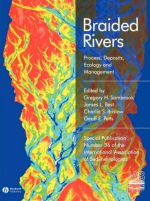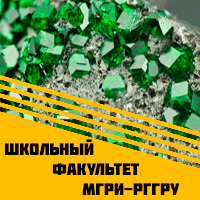Добрый день, Коллеги. Важное сообщение, просьба принять участие. Музей Ферсмана ищет помощь для реставрационных работ в помещении. Подробности по ссылке
Braided rivers: Process, deposits, ecology and management / Многорусловые реки: процесс, месторождения, экология и управление
In 1992, the first conference on Braided Rivers was held at the Geological Society of London (Best & Bristow, 1993). It sought to bring together a wide range of practitioners, primarily sedimentologists, geomorphologists and engineers, to review the state-of-the-art in research, and discuss common problems and future research directions. At the time of the first conference, considerable effort had been devoted to the investigation of single-channel meandering channels, as well as more generic considerations of coarse-grained rivers, as championed by the benchmark series of gravel-bed rivers conferences that had begun in the 1980s. However, with the backdrop of the onset of management plans for one of the world’s greatest braided rivers, the Brahmaputra–Jamuna (see Mosselman, this volume, pp. 277–288 and Sarker & Thorne, this volume, pp. 289–310, for updates), there was a consensus that research into braided rivers was not as advanced as for single channels, and several of the papers at the 1992 meeting outlined future avenues for research (e.g. Bridge, 1993; Bristow & Best, 1993; Ferguson, 1993). A decade on, after the second conference on braided rivers held at the University of Birmingham in 2003, it is thus appropriate to ask how much progress we have made during this period and what are the future research needs? The purpose of this brief introductory paper to the contributions in this book is to outline some key developments, place the chapters that follow into some kind of context and, perhaps most importantly, highlight areas where little progress has been made or where recent research has shown that more work is required. The topics identified are not, of course, exhaustive, but reflect the flavour of discussions at the second conference, and hopefully will serve as a backdrop to the contributions that follow. <...>




